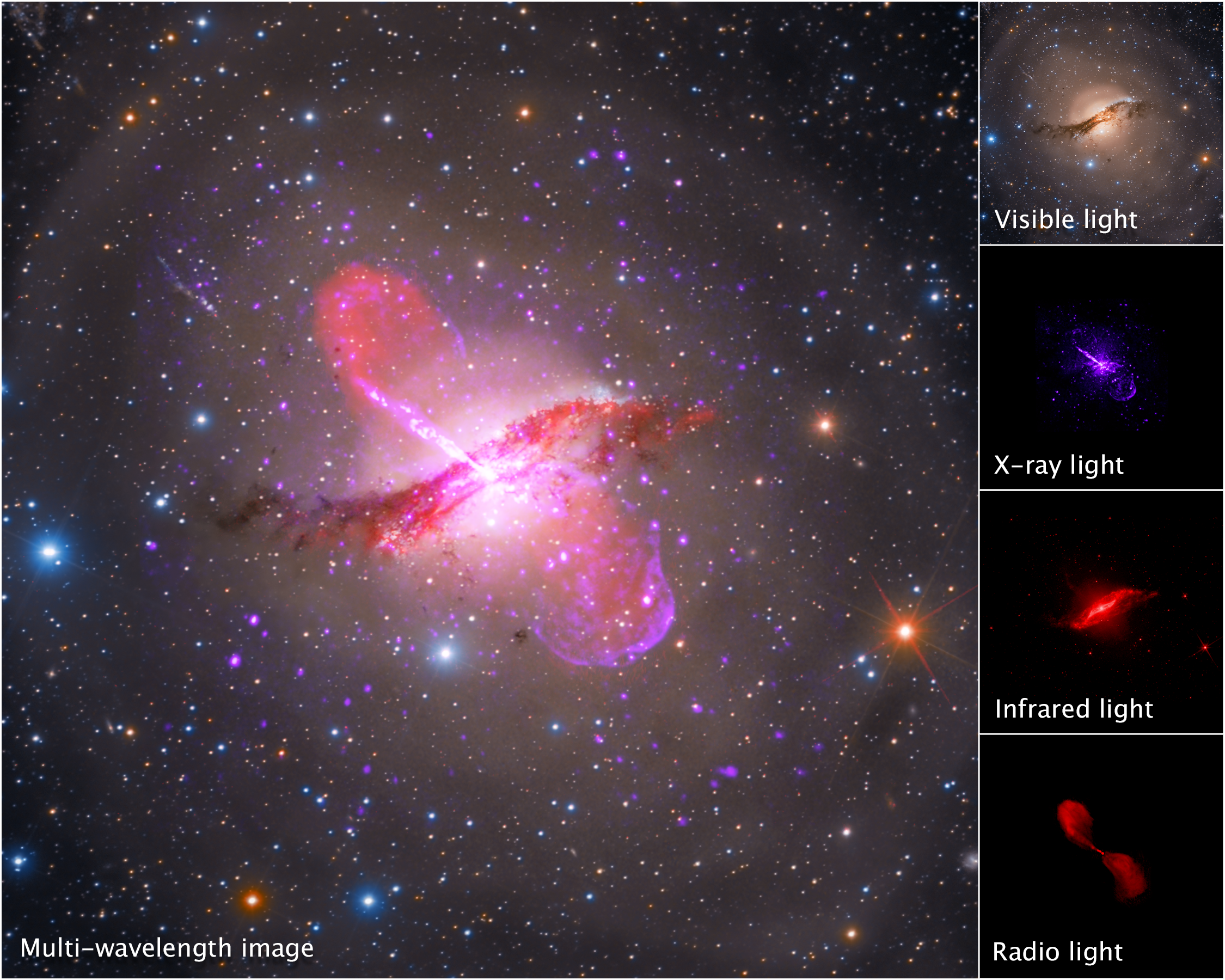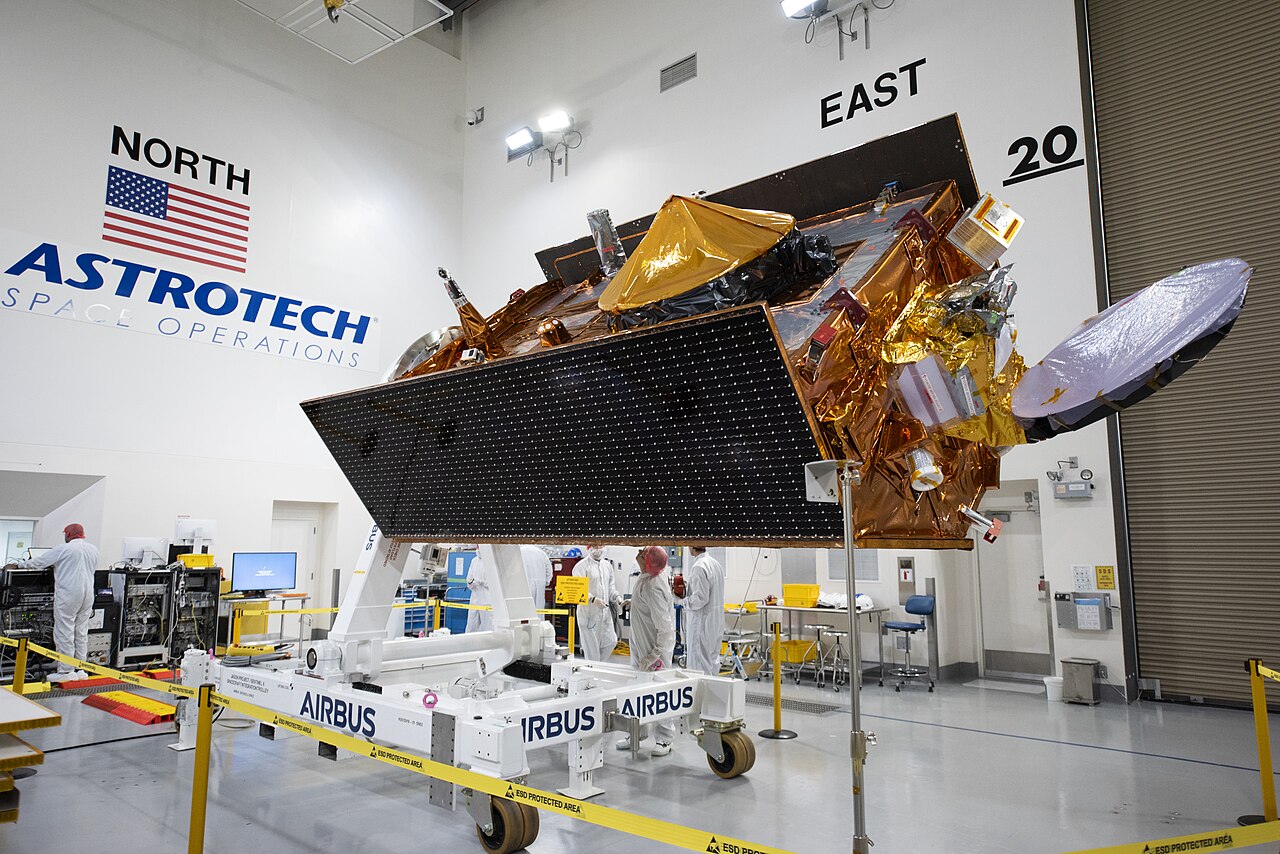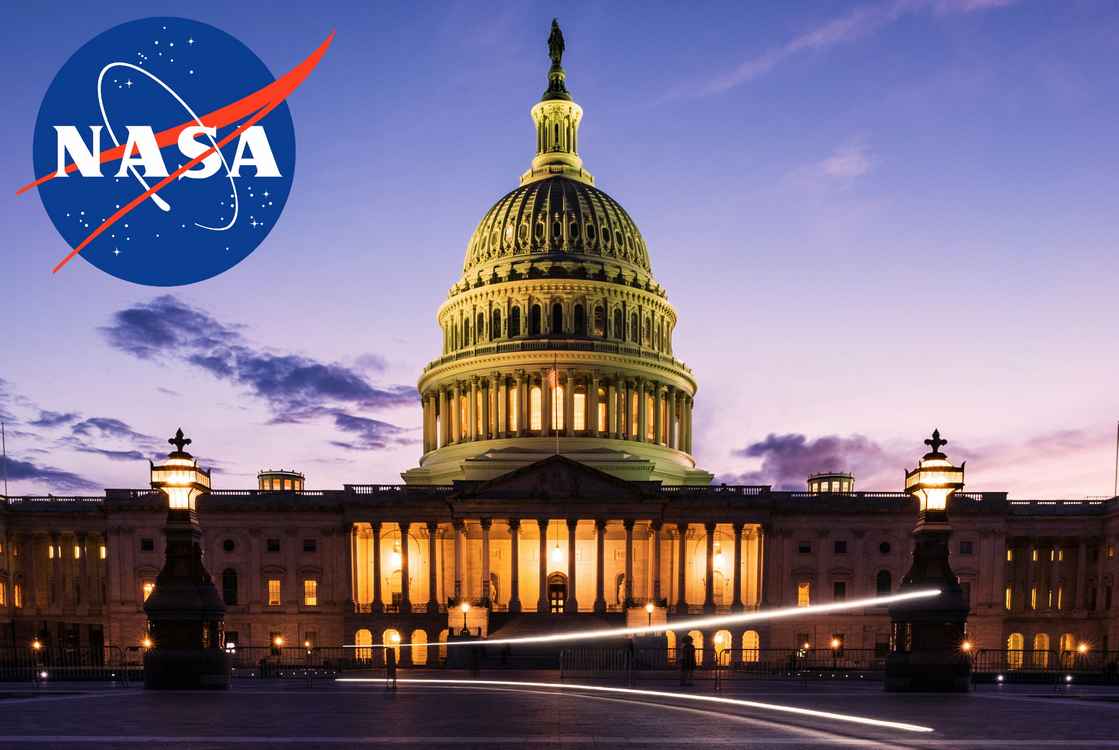PICTURED: The fully assembled James Webb Space Telescope with its sunshield and unitized pallet structures that fold up around the telescope for launch, are seen partially deployed to an open configuration to enable telescope installation. PC: NASA/Chris Gunn.
Story at a glance…
-
In just over two months, the James Webb Space Telescope will Launch.
-
The most-powerful telescope ever made, Webb will look through the infrared light at the earliest history of the universe.
-
Other instruments will be included, that will allow Webb to study star formation, black holes, exoplanets, and more.
On December 18th, the most-powerful telescope ever built by man will depart the Earth on an Arianne 5 rocket. A project more than 20 years in the making will then need another 2 months of travel before it can begin stargazing.
Once it arrives however, the James Webb Space Telescope, on paper, offers a watershed moment in astronomy. It will be the first opportunity humanity will have to look upon light that has been travelling since the first stars formed 13.6 billion years ago.
Designed in a collaboration between NASA, and the European and Canadian Space Agencies (ESA, CSA) along with support from dozens of “individual institutions and scientists,” it’s one of the largest international space efforts ever undertaken.
“How we’re feeling? It’s very real,” Sarah Kendrew, an engineer and astronomer with ESA, told WaL. “I’ve worked on the project now for about 13 years… and it’s the first time we’ve been this close to launch, and it’s starting to feel incredibly real. Our baby is really going into space”.
Designed to study the lifecycle of stars, the earliest history of the universe beyond the horizon of visible light, black holes, and the atmospheres of exoplanets, Webb was tailor-made to build on all the achievements of the Hubble Space Telescope, while opening up new doors of observation through the spectrum of infrared light.
Launching from the ESA’s spaceport in French Guiana, it will travel 27 minutes before separating from the rocket and cruising to the second Lagrange Point, or “L2,” an orbit about 1.5 million kilometers from Earth in the direction away from the sun.
Once there it will unfold its massive 6.5 meter mirrors and sun shield, before spending several months testing its four scientific instruments. Here it is unserviceable, and so if anything breaks, there has to be a backup and backups for the backups.
A whole new (red) world
Designed from day-1 to be a telescope that looks entirely through the infrared spectrum of light, the four observation instruments Webb has will give us a totally new perspective on our universe.
“The big advantage this offers is actually that we can observe these wavelengths at all, because a lot of those types of lights are not accessible on the ground,” says Kendrew. “A lot of that kind of radiation is absorbed by the Earth’s atmosphere”.
A project scientist working with ESA at the Space Telescope Science Institute in Baltimore since 2016, Kendrew’s work has focused on one of the four instruments called “MIRI” or the mid-infrared instrument. With it, we can quite effectively observe cosmic features we know now are difficult to observe with only visible light, such as exoplanets.
“The infrared is a really good wavelength of light to look at these objects in because a lot of the types of molecules that we expect to see in the atmospheres of these exoplanets have their main signatures in the infrared,” says Kendrew. With the detection of those molecules, the search for signs of life will be made much easier, as detection of the signatures of basic building blocks can be made much more quickly.
Further out, we know the oldest stars and galaxies in the universe can’t be seen, as their light is moving slower than the galaxy is expanding. These are called “red-shifted galaxies”.
“In the early universe, the starlight from galaxies, because of the expansion of the universe, gets stretched to longer wavelengths. So if we want to see that same light from a galaxy in the early universe, it gets pushed into the infrared because the universe is expanding at such high speed: that’s what we call ‘red-shift’”.
“And so because Hubble can only look a little bit into the infrared, it kind of has reached the limit in distance to what it can really see, and if we want to probe even further to even earlier times in the early universe we need a telescope that can look more into the infrared,” she explains.
A pair of near-infrared instruments will also be on board Webb, which will allow it to look in close detail, and capture light from up to 200 different objects. MIRI is specialized for peering into the cold dusty regions of space where stars form, and will be ideal for studying their lifecycle.
PICTURED: Four observations of the Centaurus A system taken and rendered by the ESA, including in infrared, the wavelengths which Webb will observe in exclusively. PC: X-ray: NASA/CXC/SAO; optical: Rolf Olsen; infrared: NASA/JPL-Caltech; radio: NRAO/AUI/NSF/Univ.Hertfordshire/M.Hardcastle.
Space-spectroscopy and pirates
As what amounts to essentially a priceless object, much of the details of Webb’s transit to French Guiana remained hidden, which according to some reports was to protect it from pirates.
“I don’t actually know where the pirate story came from,” admits Kendrew. “Clearly the James Webb Space Telescope is a high-value item, and sometime over the summer something originated on social media and it kind of took off and people began looking into whether there was a history of piracy on astronomical telescopes”.
Whether such a history exists, with a mirror as tall as a two-story building and a tennis court-sized shield to prevent the pesky sun from interfering with observations, it had to be moved via boat which one might suppose means it’s more vulnerable.
Part of the reason it’s so big is to fit all of the scientific instruments on board, including two near-infrared spectrographs, which can not only see things that are difficult to be seen, but can detect the molecular composition from which the infrared light is arriving, meaning not only can Webb see the atmosphere of an exoplanet for example, but what that atmosphere is made of.
Light arriving from different molecules can be detected across a spectrum, the root word of “spectrograph”. The mix of colors within the infrared light detected by the instrument can clue scientists in to what molecules that light exited from before it arrived at the telescope.
It won’t be for another 6 months following the launch that Webb will finally start conducting observations, and there’s already a lot of science lined up, as the waiting list to use the most-powerful telescope ever is quite long.
“We have a bunch of science lined up for the first year of Webb. The teams who are responsible for building the telescope and the instrument will get some time allocation as a kind of reward which they can use however they want,” explains Kendrew, who told WaL she plans to use her own allocated time to study exoplanets, as it’s a young field of astronomy that’s really booming at the moment.
“It’s such a huge project, the number of people involved who got time because they helped build the instruments probably already stretches between 12-13 countries, and dozens of individual institutes and scientists”.
Webb has not always had the best of times in its development, and cost-overruns, breakdowns, delays, and more, have incessantly plagued the telescope. Now comes the most difficult part of the waiting game, as after it goes up with Arianne 5, anything broken will remain that way, but it won’t be uncovered until diagnostics begin in the 2-3 months following the arrival at L2.
It will be a nail biter, but worth it if scientists like Kendrew have finally gotten it right, and Webb can deliver our eyes to the moments after the birth of our universe, and so very much more besides.




